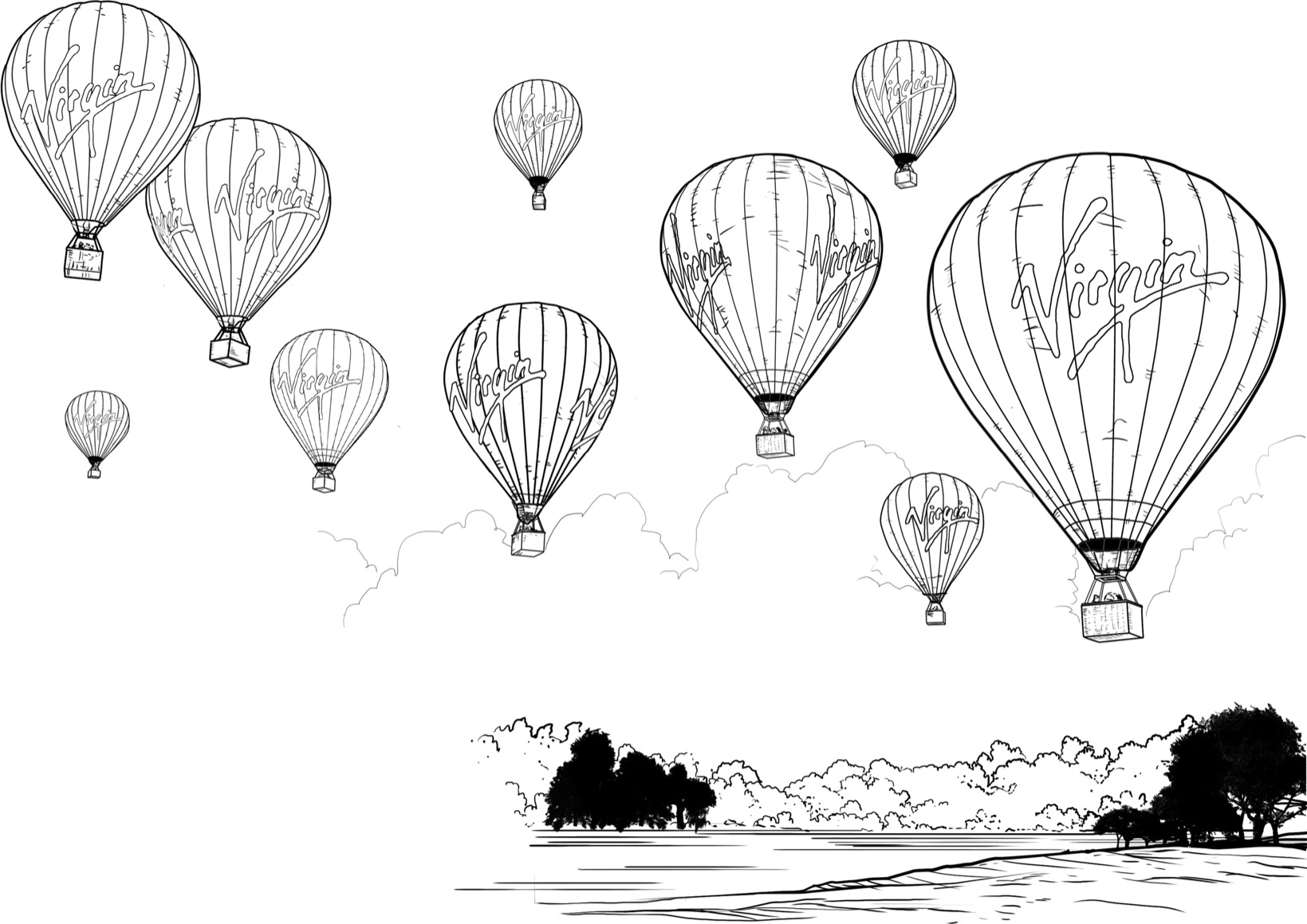Chapter 5
Breaking World Records

Richard was always on the lookout for new ways to promote Virgin Atlantic Airways. He tried several times to break the speed record for crossing the Atlantic Ocean on boats named Virgin Atlantic Challenger and Virgin Atlantic Challenger II.
Richard sailed on both boats, crossing the Atlantic in just over three days. While onboard the first Challenger in August 1985, his mother radioed him with some good news: Joan had just had a baby boy. Back on land, someone showed Richard a picture of the baby that had appeared in a local newspaper, and he felt overwhelmed with joy. He and Joan named their son Sam.
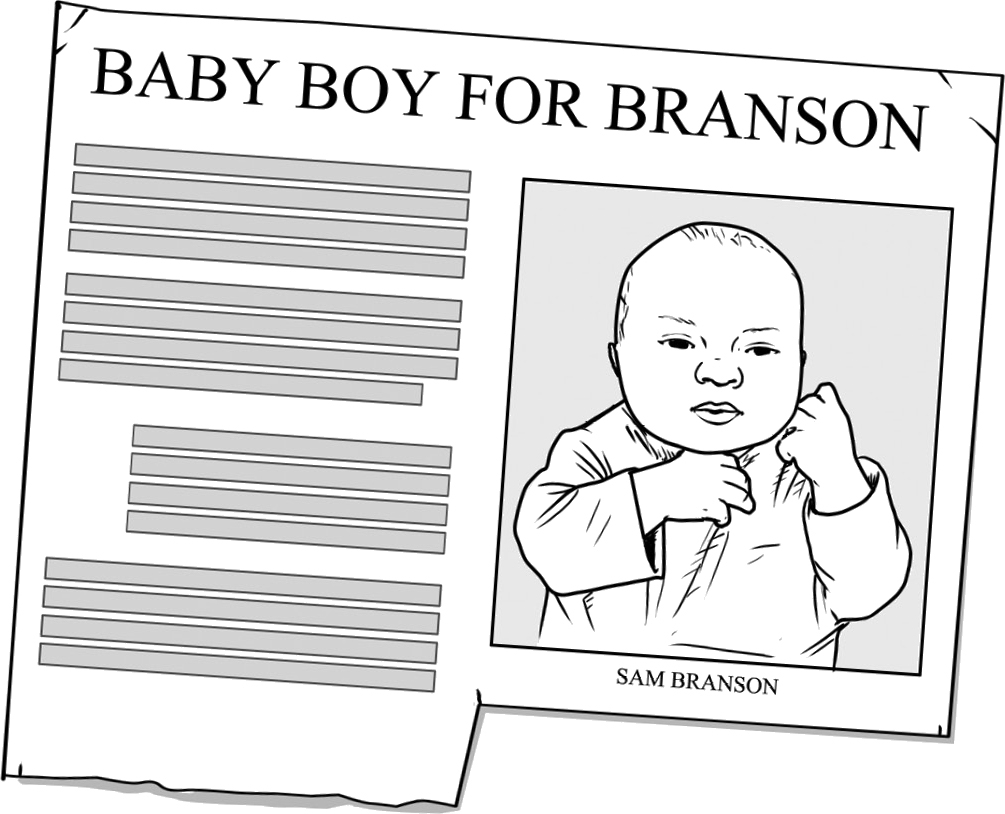
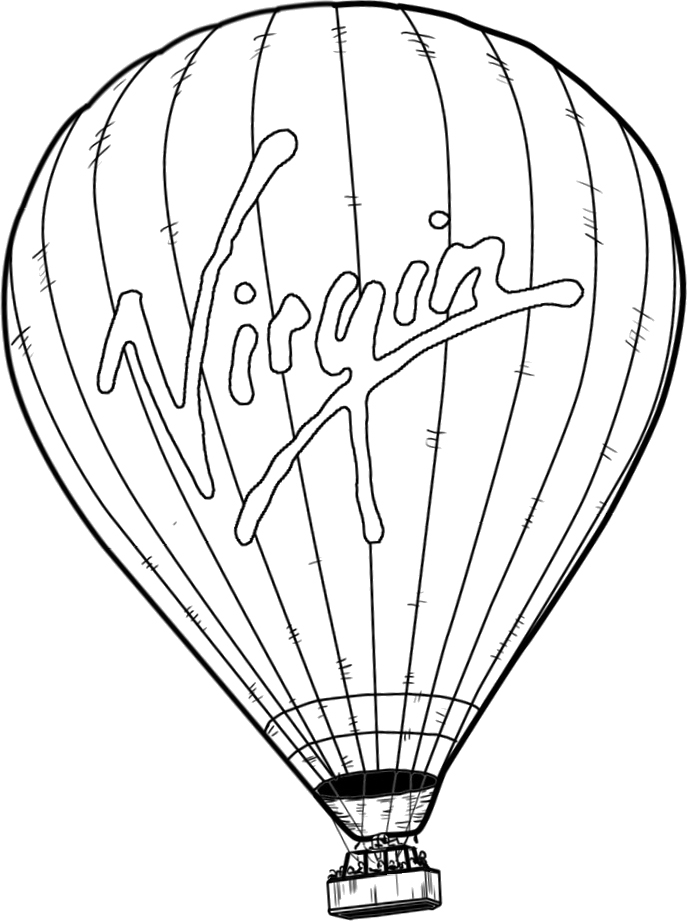
In 1987, Richard made plans to cross the Atlantic again—in a balloon! Richard quickly learned how to fly balloons, and he fell in love with the views from several thousand feet in the air. The Virgin name appeared in huge letters on his hot-air balloon.
People have flown in hot-air balloons since the eighteenth century. But no one had ever ridden in a balloon like the one Richard flew in. When it was inflated, the balloon was as tall as a twenty-one-story building.
The success of the Atlantic crossing relied on several new innovations. The balloon would fly at about 27,000 feet in the air—much higher than others had in the past. Strong jet-stream winds would push it along at fast speeds—up to 140 miles per hour. Richard and his partner Per Lindstrand rode in a special cabin that provided air, radios, and navigation equipment to help them guide the balloon in flight.

On July 2, Richard and Lindstrand lifted off from Maine. The balloon was soon soaring across the ocean at record speeds. The next day, the balloonists spotted Ireland. They flew close to the ground to cast off extra fuel tanks, and briefly touched land. Then the balloon soared skyward again. Lindstrand had trouble controlling the craft, and soon it was flying low over the ocean. The cabin holding the men hit the water. A mechanical problem prevented them from releasing the balloon as they had planned. Richard and Lindstrand prepared to jump out into the water. Only Lindstrand made it. After he jumped, the balloon shot up again. Richard was alone. And he felt certain he was going to die.
Richard had to act fast. He cut off the fuel to the balloon so it would sink. Then he climbed out of the cabin and prepared to jump into the water. A rescue helicopter was already flying nearby. Richard jumped into the cold water. The life jacket he wore quickly brought him to the surface. He said, “It was heaven. I was alive.”
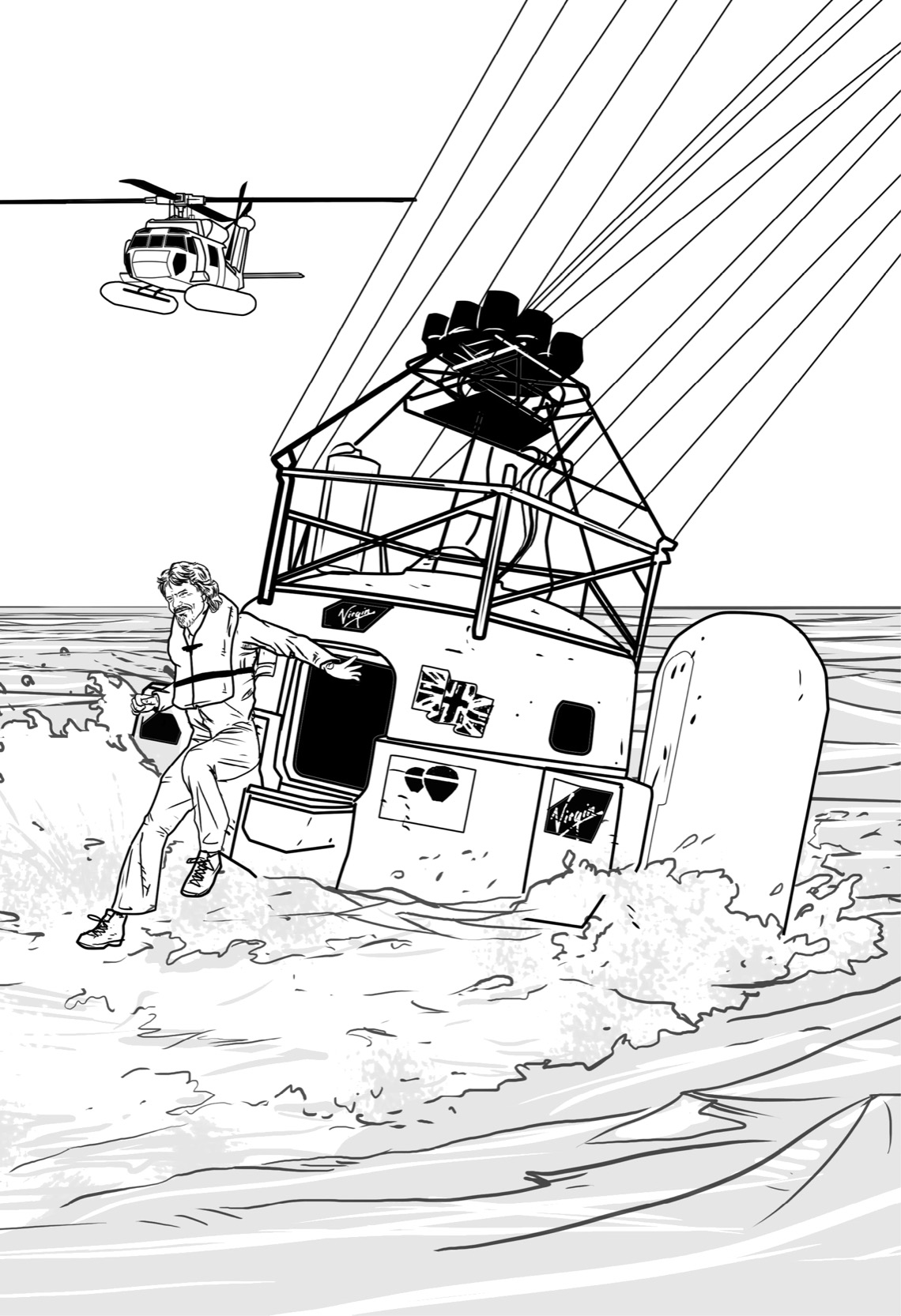
The helicopter picked him up and then found Per Lindstrand. The two men hugged each other, glad that they had survived. And they had also made history. Richard and Lindstrand were the first people to cross the Atlantic in a hot-air balloon! Afterward, Richard hinted that his adventurous ways were over.
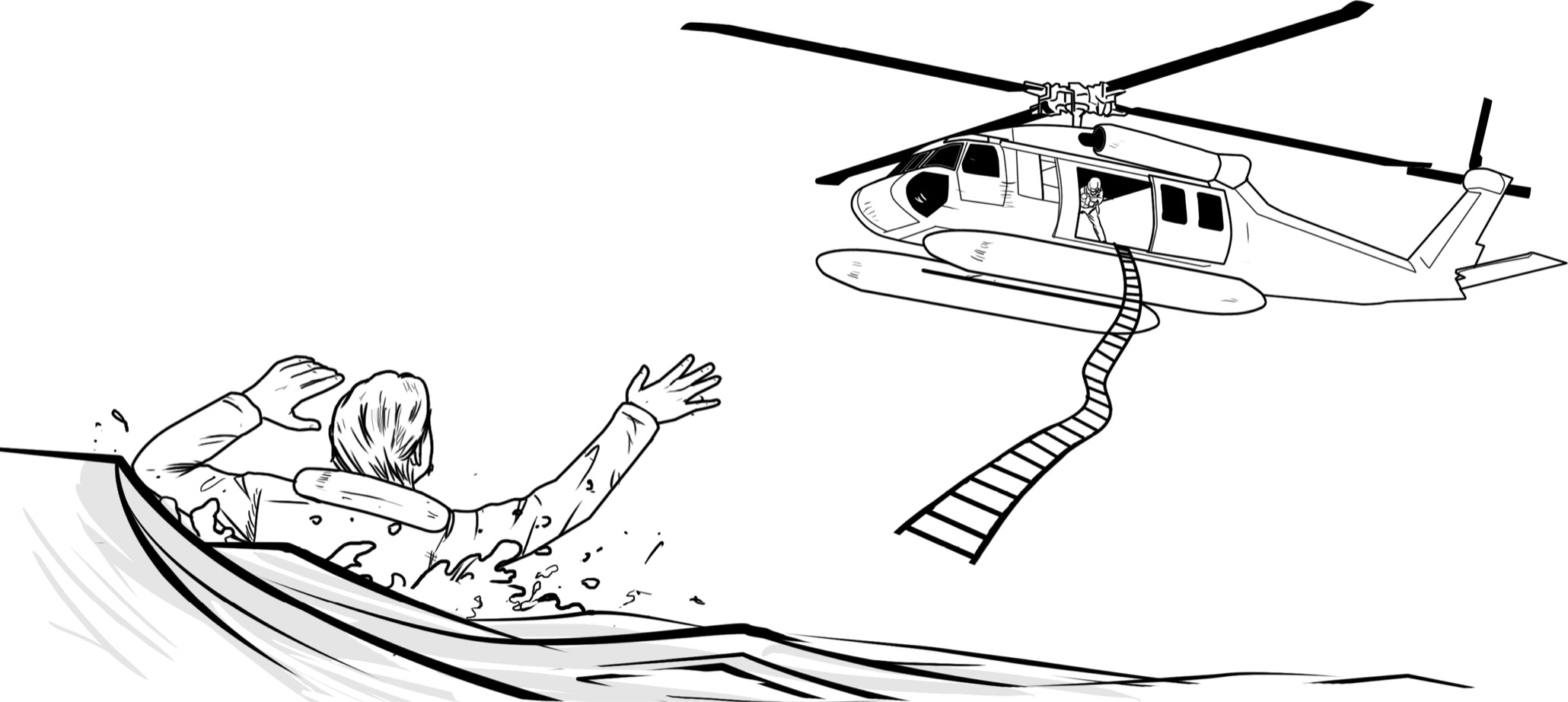
But his love of ballooning led to even more trips and more records. In January 1991, he and Lindstrand crossed the Pacific Ocean in a hot-air balloon. They were the first people to do so. The two men were in the air for just over forty-six hours—another world record! Later, they made three different attempts to fly around the world. They failed, but along the way, Virgin built the largest fleet of hot-air balloons in Great Britain. And Richard showed the world that a successful businessman could also have a daring, adventurous side.
